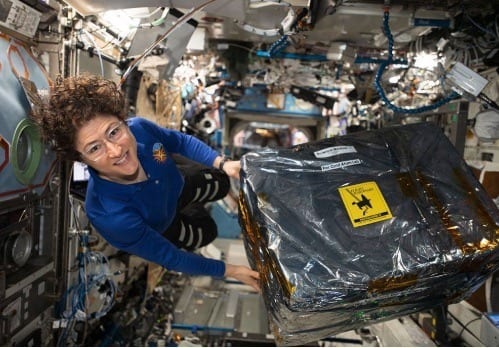Analog astronaut missions place scientists in remote locations on Earth that physically resemble space destinations like Mars and collect critical scientific data to inform space agencies about what the conditions are like in the environment they are simulating.
The all-female mission began two weeks ago on January 4 inside the “HI-SEAS”: Hawaii Space Exploration Analog and Simulation; located at the slopes of Mauna Loa, the largest volcano in the world, in Hawaii.
https://www.instagram.com/p/B6qWO77gx5T/
The all-female crew were part of the first mission called SENSORIA; and included an astrobiologist, researcher, astronomer, bioengineer, medical officer and geoscientist. The program, which intentionally supports women explorers, is a major part of the vision of the Sensoria missions, which aims to put “women at the forefront of space exploration, which has historically not been the case.
J.J. Hastings, a bioengineer and the commander of the inaugural Sensoria I mission, told Space.com, “All of our missions will be female-led and female-majority. We will welcome with open arms our male colleagues, but we believe that women need to be placed at the center of our shared vision for space exploration, that women need to be given a platform for professional development, opportunities for research and training.”
Coming back to Earth after #Sensoria2020 https://t.co/B3SPKQwUlr pic.twitter.com/CGJB3qPJTO
— Maki Thee Martian (@Astro_Eustice) January 19, 2020
Hastings also said upon returning, that the experience was “a bit surreal, though we’d barely gone 100 kilometers away from where we are right now, it feels like a completely different world.”
“What I find extraordinary is, as opposed to maybe a group of individuals who come in to endure two weeks together and move on, we’ve grown that much closer, which to me gives strength to the rationale behind the Sensoria program to really bring incredibly talented, intelligent, extraordinary professionals in the space sector together to form even grander plans together,” Hastings said.
https://www.instagram.com/p/lfp0ciIUb8/
So what have these six extraordinary experts been doing inside the HI-SEAS? A whole lot. Tasks included performing genetic sequencing on-site, fermenting foods, experimenting with new technologies, illustrating, developing non-verbal methods of communication, working on sustainable hydrogels and examining various methods of critical self-reflection in a space analog environment.
In our final hours, we think back to the wise words we received from @Astro_Ron and @Astro_Flow. Your reality is different than that of your crew (flight and ground). Always communicate, proactively resolve problems, and you will have a successful mission. #SENSORIA2020
— SENSORIA (@SENSORIA_6) January 18, 2020
As well as explicitly supporting women with their analog missions, The Sensoria project wants to encourage young women through educational programs, collaborating with Sally Ride Science to support young women in science. The program is an education nonprofit that works with groups of undergraduate women to network with the Sensoria I crew from the commercial space company Blue Origin.
Now, as the Sensoria I crew depart the HI-SEAS habitat, a new crew of researchers from the European Space Agency will take their place for their own analog mission.
Last October, NASA made history when Christina Koch and Jessica Meir became the first all-female team to walk outside the International Space Station. Earlier this week, astronauts Koch and Meir completed work to change the batteries on the International Space Station’s solar power grid in their third ever all-woman spacewalk.


